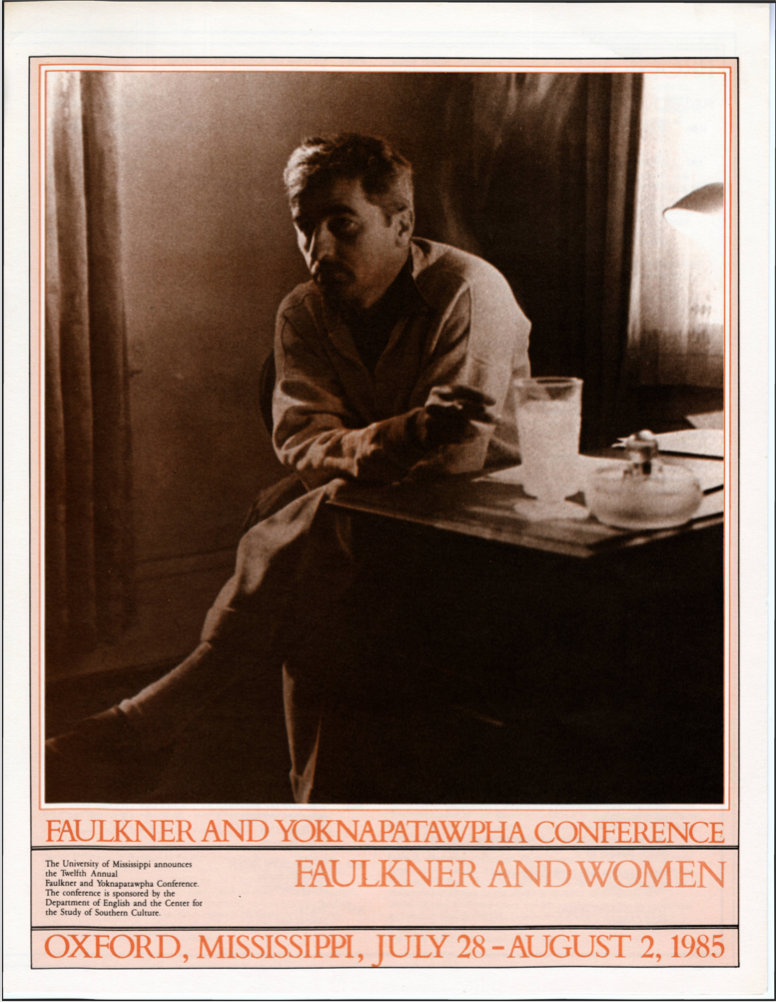
Faulkner's Hen-House: Women as Bounded Text
Location
Ole Miss Union Ballroom
Start Date
2-8-1985 10:30 AM
Description
Faulkner’s own use of the metaphor of the chicken-house to refer to his fiction serves as general framework and is linked with the notion of hen-house as "any place where women live or are available" in order to build a correlation useful to focus on woman—and women--as represented content, as text. The textual surface structure of "Jealousy," "Episode," "Nympholepsy," "Frankie and Johnny," "The Priest," "Miss Zilphia Gant," "Idyll in the Desert," "Two Dollar Wife," and "Evangeline" as well as Sanctuary and Requiem for a Nun reveals dominant narrative features that order information and propose a prescribed meaning on women.
Studying the woman as text in Faulkner allows us to focus on the constituent features of semantic clusters and on discoursive frames (restrictions) enclosing "women" in "setting" or "theme." An important paradox arises, that of protection or entrapment.
From "definition" to "the defined," woman is reflected in function (ideologeme) conceived by a male-dominated mode of representation of reality, one in which cultural codes (preexisting the utterance itself) and the author’s acceptance of those codes and his own artistic design converge to create the configuration of woman as bounded text.
Rather than discussing Faulkner as "womanist" or "antifeminist," the threefold path suggested in this lecture (hen-house, discoursive strategy, and bounded text codes) leads us to elucidate the symbolic function of woman in Faulkner as a programmed signifying utterance composed by author, speaker, and reader.
Relational Format
Conference Proceeding
Recommended Citation
Díaz-Diocaretz, Myriam, "Faulkner's Hen-House: Women as Bounded Text" (1985). Faulkner and Yoknapatawpha Conference. 26.
https://egrove.olemiss.edu/fy/1985/schedule/26
Faulkner's Hen-House: Women as Bounded Text
Ole Miss Union Ballroom
Faulkner’s own use of the metaphor of the chicken-house to refer to his fiction serves as general framework and is linked with the notion of hen-house as "any place where women live or are available" in order to build a correlation useful to focus on woman—and women--as represented content, as text. The textual surface structure of "Jealousy," "Episode," "Nympholepsy," "Frankie and Johnny," "The Priest," "Miss Zilphia Gant," "Idyll in the Desert," "Two Dollar Wife," and "Evangeline" as well as Sanctuary and Requiem for a Nun reveals dominant narrative features that order information and propose a prescribed meaning on women.
Studying the woman as text in Faulkner allows us to focus on the constituent features of semantic clusters and on discoursive frames (restrictions) enclosing "women" in "setting" or "theme." An important paradox arises, that of protection or entrapment.
From "definition" to "the defined," woman is reflected in function (ideologeme) conceived by a male-dominated mode of representation of reality, one in which cultural codes (preexisting the utterance itself) and the author’s acceptance of those codes and his own artistic design converge to create the configuration of woman as bounded text.
Rather than discussing Faulkner as "womanist" or "antifeminist," the threefold path suggested in this lecture (hen-house, discoursive strategy, and bounded text codes) leads us to elucidate the symbolic function of woman in Faulkner as a programmed signifying utterance composed by author, speaker, and reader.

